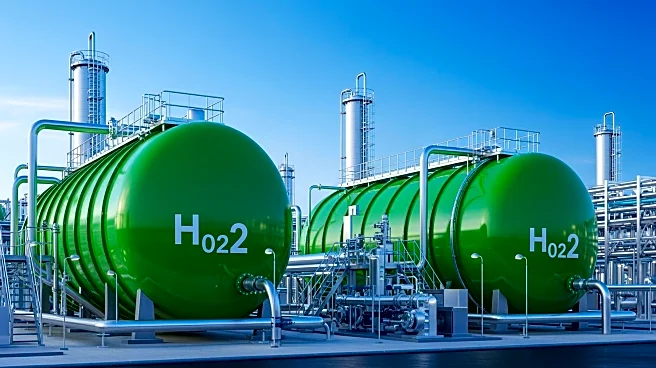What's Happening?
Green hydrogen, produced through electrolysis using renewable energy sources, is gaining traction as a zero-emission fuel capable of replacing fossil fuels in industries with high decarbonization challenges.
Industries such as steel, cement, chemicals, and heavy transport are exploring green hydrogen to meet their energy needs without carbon emissions. The technology offers benefits like zero carbon emissions at the point of use, high energy density for storage and transportation, and flexibility for renewable energy grids. Major companies and governments are investing in green hydrogen projects, aiming to transition from pilot projects to large-scale deployment, thereby supporting global decarbonization efforts.
Why It's Important?
The adoption of green hydrogen is pivotal for industries that struggle with decarbonization due to high heat requirements and constant energy demands. By replacing fossil fuels with green hydrogen, these industries can significantly reduce their carbon footprint, contributing to global climate goals. The International Energy Agency projects a substantial increase in hydrogen demand, highlighting the urgency for cleaner alternatives. Green hydrogen's ability to provide energy flexibility and support renewable energy integration makes it a cornerstone of future energy systems, potentially transforming industrial energy consumption and driving economic growth in sustainable sectors.
What's Next?
As green hydrogen technology advances, the focus is on overcoming challenges such as high production costs and the need for infrastructure development. Efforts are underway to scale up electrolyzer production, establish hydrogen hubs, and develop hydrogen-ready industrial equipment. Countries like India are positioning themselves as global hubs for green hydrogen, leveraging their renewable energy capacity and industrial base. The path forward involves strategic investments, policy support, and international collaboration to accelerate the transition to a hydrogen-based economy, with potential benefits for early adopters in terms of sustainability and energy cost savings.













